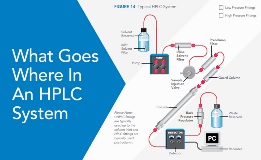

-
Reduce Downtime and Move Fluids Precisely with Pumps from IDEX Health & Science
Apr 14, 2023 by IDEX Health & ScienceWe manufacture high-precision motorized pistons and pumps with a unique combination of materials, designs, and manufacturing processes that provide you with a reliable and precise fluid actuator. Learn more about our precision pumps.
Full story
-
Proteomics and Biomarkers are Key to Better Medical Treatments
Feb 27, 2023 by IDEX Health & ScienceProteomics and biomarkers are key to more effective medical treatment plans. Learn how they work together to yield critical insights into diseases.
Full story
-
Product Development Process (PDP) Model Types
Feb 20, 2023 by IDEX Health & ScienceTaking into consideration that the failure rate of new product development is somewhere between 25 – 45% and that only one new product launch succeeds out of seven ideas, it’s obvious that having a standardized innovation process is critical for saving your company time and money. Although it can differ based on the individual needs of a company, there are several approaches that can be used for formalizing a Product Development Process (PDP). Discover 3 of the most recognized PDP.
Full story
-
The Evolution of Product Development
Feb 20, 2023 by IDEX Health & ScienceProduct development is the process of taking ideas from the initial concept to the point where a product is launched in the market. Alternatively, it can also be recognized as the method of a formal process followed by a business. Over time, the product development process has evolved and become much more efficient with an iterative fusion of different disciplines. Discover the benefits of fine tuning your product development process.
Full story
-
Product Innovation Models
Feb 20, 2023 by IDEX Health & ScienceIn business, the product innovation process translates ideas into a good or service that creates value and satisfies the needs and expectations of their customers. There are many different ways a company can innovate, but all companies should consider four types of innovations to stay relevant in their market. Learn more in this resource.
Full story
-
Defining Your Products Checklist
Feb 20, 2023 by IDEX Health & ScienceHow do you define your products checklist for new product development? Find a list of questions to consider as you and your team brainstorm product ideas.
Full story
-
Importance of Degassing Fluids
Feb 7, 2023 by IDEX Health & ScienceDegassers avoid inaccurate sampling, maintain throughput and reduce errors by removing dissolved gases – even across complex fluid systems – before they outgas into bubbles. Utilizing degassing in your fluidic path is essential for consistent and accurate results.
Full story
-
What Goes Where in an HPLC System
Jan 25, 2023 by IDEX Health & ScienceOf course, fittings are standard items used to connect the components together, using tubing as the flow path bridge between components. Yet, one of the most commonly-asked questions regarding fittings is, “Where do all these fittings go in my system?” In other words, how do I know what to use and where? One common way to distinguish between fittings is by classifying them based on the pressure they can hold. This narrows the fittings choice based on where in the system they will be used. Learn what goes where in an HPLC system.
Full story
-
Benefits of Supplier Collaboration in New Product Development
Jan 11, 2023 by IDEX Health & ScienceThe participation of a supplier that utilizes their own PDP internally can improve both the effectiveness of the product development outcome as well as the efficiency of the product development process. The effectiveness of a supplier is related directly to how well they perform compared against the desired product outcome, while efficiency is related to development costs and the required time for the supplier to complete development. Discover the short term and long term benefits of strategic partnership
Full story
-
Welcome Photonics West Attendees to IDEX Health & Science
Jan 6, 2023 by IDEX Health & ScienceAt IDEX Health & Science we are the market leader in providing “enabling” optical systems, vertically integrated from sensors, cameras, optical filters, laser, and optical components through system design, manufacturing, and metrology. We look forward to seeing you at Photonics West!
Full story
